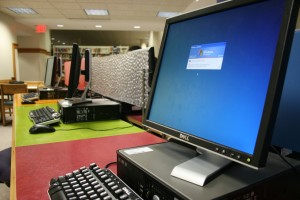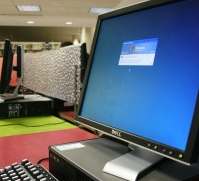
On Oct. 22, Microsoft released its new, sleek and much-improved operating system, Windows 7, in hopes of curing any disdain left by its predecessor, Windows Vista.
Where Windows Vista tried to splash unnecessary features into the mix, Windows 7 looks to combat those with a more stable, standard form of Windows-type operating system, much like St. Thomas’ current system, Windows XP.
Information Resources and Technology (IRT) will hold off upgrading current campus systems to Vista because of the many issues people ran into. But with Windows 7, IRT is confident that an upgrade will happen in the next year when the new computer roll-out begins in the summer.
“At this point, our plan is to begin implementation of Windows 7 starting with our computer replacements next summer,” said Lori Christianson, associate director of client services with IRT. “It will take us three years, which will take us close to when XP will officially be no longer supported, and we want to make sure we get them out before that.”
Currently, Windows XP does not have a direct upgrade path to Windows 7. If a computer is running Windows XP, Microsoft recommends that you back up data on a separate drive and then reformat the drive before installing Windows 7. This is one reason why IRT will be waiting for entirely new systems before upgrading to Windows 7.
“It’s not really realistic for us to do that with 3,000 machines when we already do backups when new computers are coming in,” Christianson said. “So we’ll just do the backup, move it to the new machine, and it will be configured with Windows 7.”
IRT has begun informal testing of Windows 7 and will begin formal testing in the coming months.
“The biggest issue is really testing with our enterprise systems [like Blackboard and Murphy Online] and getting departments to do some testing with departmental-specific products because we need to make sure that it works within the university,” Christianson said.
Freshman Joe Case has “always been a PC user” and admitted while his Windows Vista lacked simplicity he looks forward to upgrading to Windows 7.
“They’ve advertised Windows 7 as simpler and easier to manage,” Case said. “Because I bought my laptop from Best Buy I’ll I get a free update to Windows 7.”
The home premium edition of Windows 7, aimed at U.S. consumers, is priced at $120 if bought as an upgrade to Windows XP or Vista. But all St. Thomas students can purchase the new system at Win741.com at a discounted student price of $29.99.
Windows 7 does not run well on older computers, so students whose computers are two or three years old are not advised to upgrade.
When the roll-out is complete, IRT plans to host both online and classroom training sessions for Windows 7.
Matt Linden can be reached at mdlinden@stthomas.edu


I have a 2 year old laptop and it runs Windows 7 just fine. The general rule is that if you can run vista, you can run Windows 7, and it’s also been tested on some netbooks and runs on those as well. So the statement in the article above , although good advice, isn’t fully correct.
To run Windows 7, it’d probably be good to have: at least a 2 ghz processor, at least 1 gig of ram ( for the 32bit version), and 16 gigs of free hard drive space. A GPU (video card) can help with some of the aesthetic aspects of 7, but is not strictly required. So most computers that are 2 or 3 years old should be able to handle Windows 7 easily. As a Windows 7 user, I would highly recommend it, especially since you can get it for 30 bucks as a student.